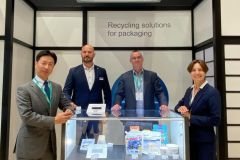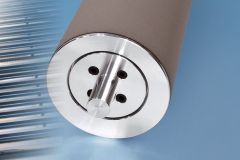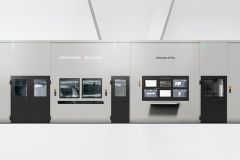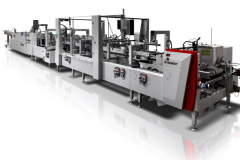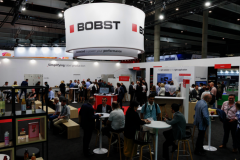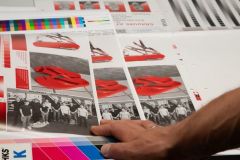At its Italian competence center, Bobst has chosen to bring rotogravure back into the spotlight. At a time when this printing process is tending to be marginalized in Europe, the Swiss manufacturer is investing in this process, particularly for the flexible packaging market. During technical days held in San Giorgio on April 8 and 9, the SmartGravure process applied to the Master RS 6003 press was demonstrated in real-life conditions.
Bobst SmartGravure, for an automated printing workflow
SmartGravure simplifies press control, improving print quality consistency and significantly reducing material waste. It offers automated digital makeready, based on color management via oneECG (Extended Color Gamut) technology, itself combined with oneSet automatic configuration. The whole system is interfaced with the Bobst Connect cloud platform for production data management.
A production line designed for complex substrates
In addition, the Master RS 6003 rotogravure press was presented in a production configuration integrated with the Novalam S 550 laminator. Together, they illustrate a complete converting line, particularly suited to the latest substrates, such as metallized films, stretch films and very thin films.
Novalam is solvent-free and offers fast, plug & play installation. Available in three standard widths, this laminator also accepts custom widths. Its maximum speed of 450âo¯m/min positions it as a central piece of equipment for converters of high-speed flexible packaging.
Automated parameterization, recipe management and connected platform
Guests were also able to observe the Bobst Connect platform, used during the demonstrations, which interconnects machines, print recipes and color profiles in a cloud environment. Thanks to Job Recipe Management, recipes can be imported automatically, reducing downtime and human error.
This level of automation is designed to adapt to production contexts where manufacturing orders change rapidly. Printing with ECG (Extended Color Gamut) reduces the number of unit washes by limiting specific color changes, thus boosting productivity and cutting consumption.
A real-life demonstration to convince printers
The special feature of this event was that all the machines were put through their paces in real production. The printers present were able to observe how the presses performed with different types of substrates, including shrink-fit materials and high-barrier substrates.
Several partners were also present to illustrate the complementary nature of our expertise: AVT for inspection systems, Sun Chemical for inks, UPM Specialty Papers for substrates and Synaptik for laminating solutions.
Gravure printing reappraised as a lever for industrial performance
While heliogravure remains dominant in certain regions, such as Asia, its decline in Europe is linked to the rise of flexographic and digital printing, which are more flexible in short runs. Bobstâ??s message is clear: digitization and connectivity can bring gravure back into the mainstream of todayâ??s industrial standards.




